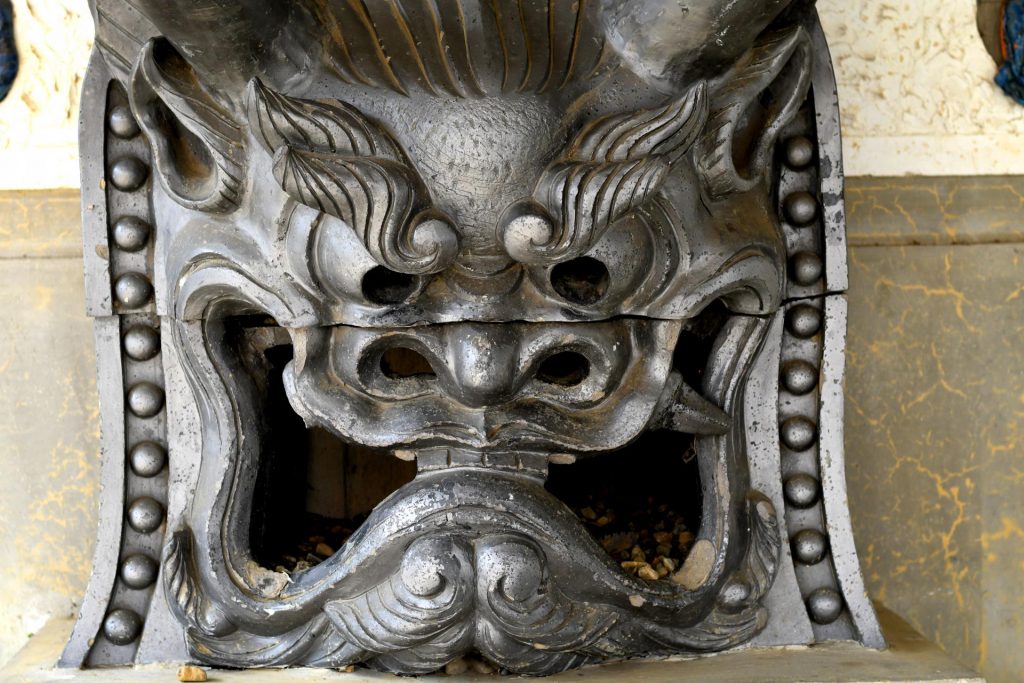
Legend has it that during the mid-Heian Period—more than a 1,000 years ago—a large number of people were reported missing from the capital city of Kyoto. According to a famous diviner, the kidnappings were traced to Shuten-doji, an oni (mystical ogre or demon) that lived in Mt. Oe in the northern Tanba Region of Kyoto, and these ogres were eating the missing people. A search party, led by a legendary warrior named Minamoto no Raiko, was sent out to defeat Shuten-doji. The men disguised themselves as yamabushi (mountain priests) and asked the oni for shelter during their “pilgrimage.” Over several bottles of sake, the alcohol-loving Shuten-doji warmed up to them and told the men the story of how he and the other oni were displaced from their ancestral Hira mountains to the west of Lake Biwa when Enryakuji Temple was built.
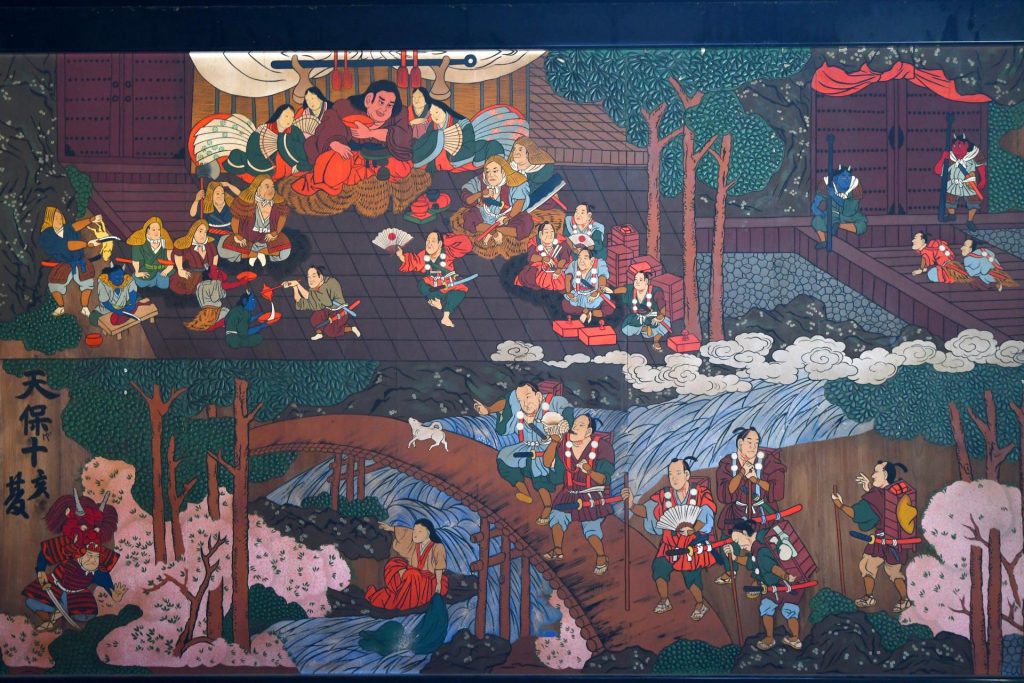
Unaffected by this sob story, Raiko offered poison-laced sake to Shuten-doji which put him to sleep. Raiko and his warriors decapitated Shuten-doji; even then, the severed head snapped back to life and aimed at Raiko’s head. Fortunately, Raiko was wearing two additional helmets and was able to defend himself. Some stories say the warriors triumphantly returned to Kyoto with the oni head, while others say it was buried at a mountain pass outside of the city as it was deemed unholy.
The story of Raiko and Shuten-doji are just one of many oni folklore stories in Japanese history. Oni are prevalent in Japanese children’s stories, usually as a way to scare kids straight. If they don’t behave, “the oni will come and eat you.”
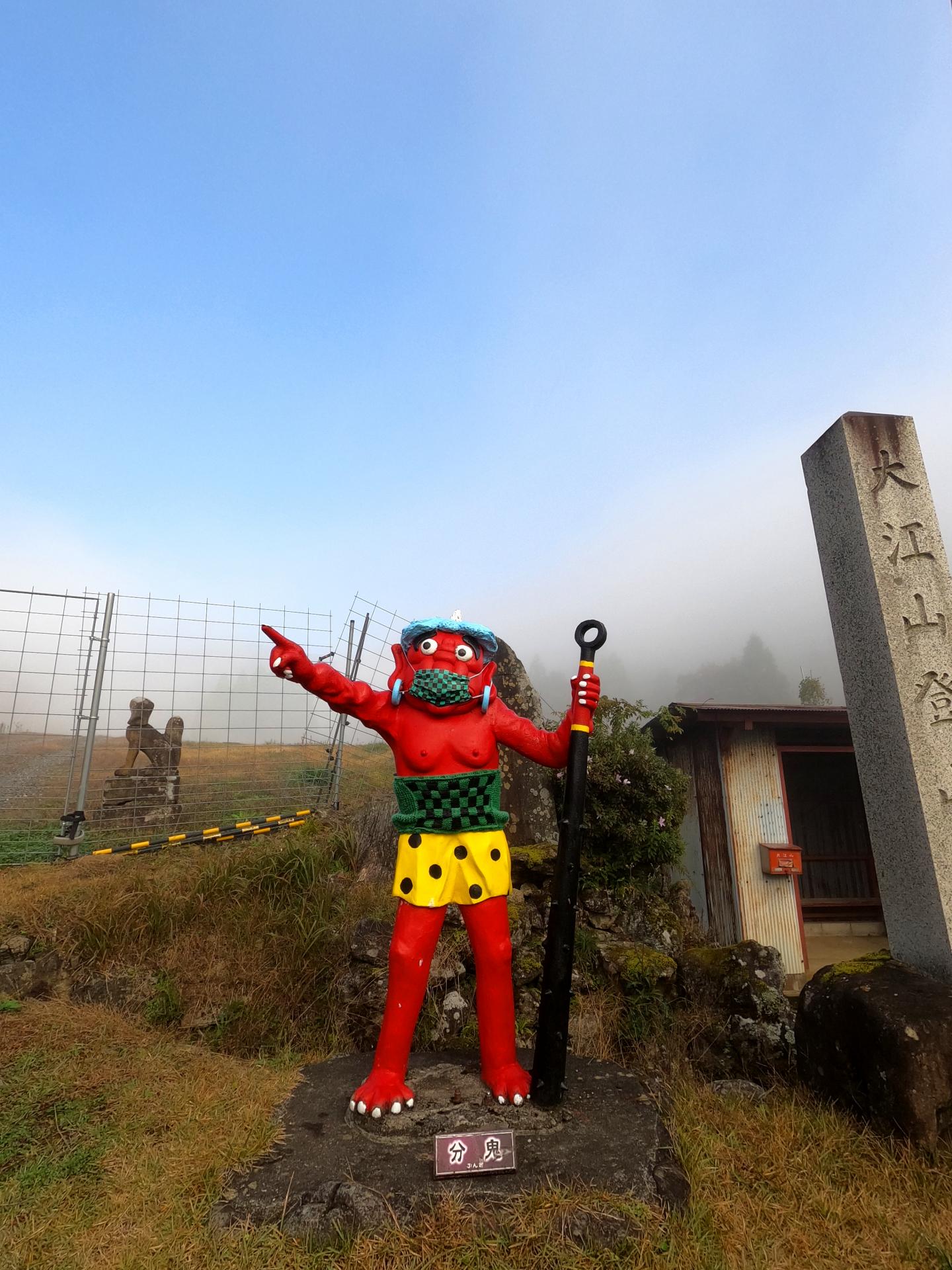
However, look a little closer and you might start to question some of these “historical” stories. The Oe Region was a strategic transportation and military location back in its day as travelers would pass the Oe Gate Station to get to Heijo-kyo, the old capital of Japan during the Nara Period. Security was high here to prevent suspicious or dangerous people from entering or exiting the capital. Later during the Muromachi Period, a sekisho (checking station) was set up here and this area was designated as one of four boundaries to rid Kyoto City from unclean influences coming from the outside world.
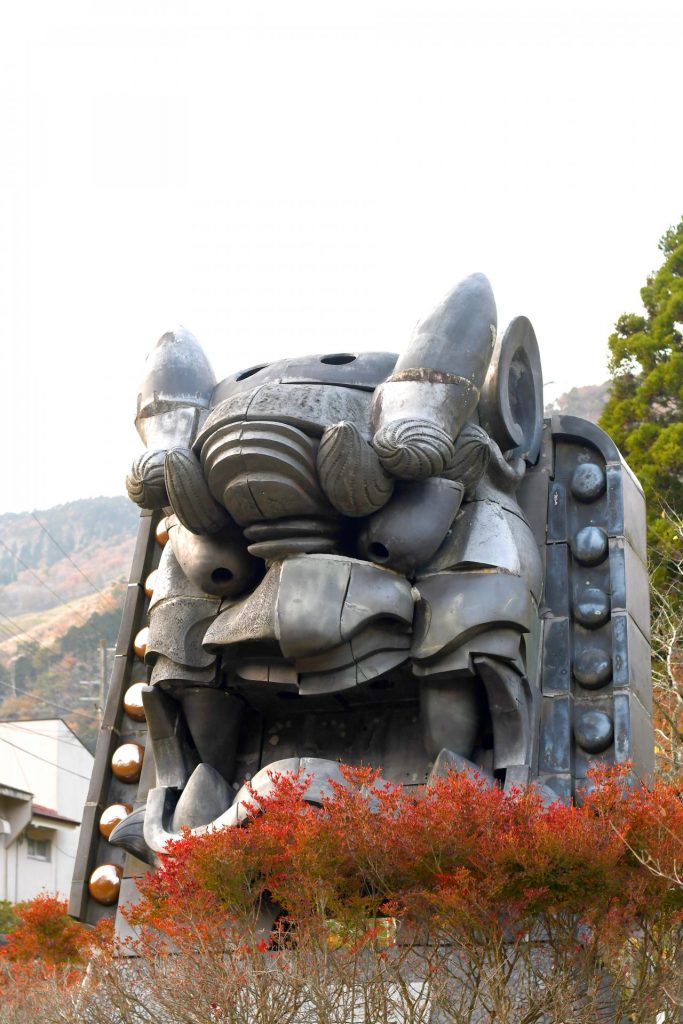
“Many traditional stories that were passed down were originally written as a form of propaganda to change the locals’ mindsets about the ruling government,” deducts Mao Nishiki from Adventure Tourism Kyoto. “The oni were always portrayed as ‘the bad guys,’ but some say the oni may not have these evil ogres—rather, local rulers who were overthrown and exiled by the governing parties of their time.”
To prevent citizens from following or turning to other leaders, these stories may have been written to scare people from venturing into unknown regions and meeting exiles and rebels.
“When I thought about it this way, my perspective on oni changed,” says Nishiki. “It’s interesting how the oni is so prevalent in stories since childhood, but we don’t really know where these stories came from. They could have been local heroes!”
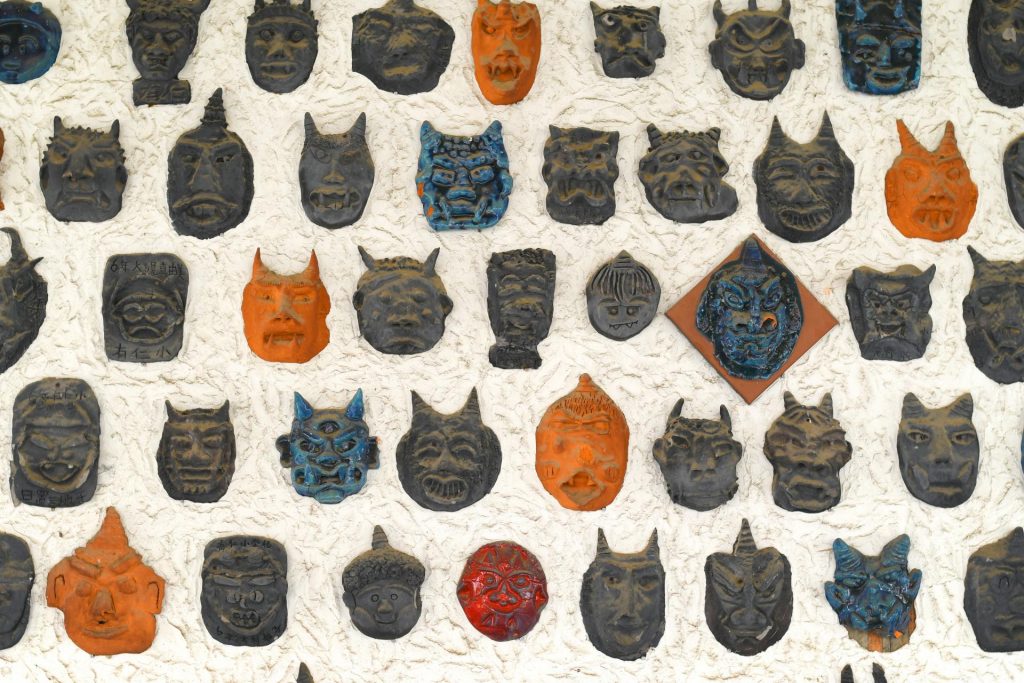
While mapping out a walking trail in Tateiwa on the northern tip of the Kyotango Peninsula, Nishiki learned about the annual Oni Matsuri held every December on the Day of the Ox. Tateiwa is home to another oni legend: a prince slaughtered an oni here and trapped it in an enormous rock overnight. They say that you can still hear the cries of the trapped oni on nights when the wind is strong and waves are high. Residents have long practiced this ancient ritual by keeping very still and quiet in their homes on this particular day, hoping to sink the oni spirit in Tateiwa.
Hiking the Oni Trail
Celebrating the deeply rooted oni culture of the region, Adventure Tourism Kyoto has created the Oni Trail, a 100-kilometer trek connecting Oe to Tateiwa. This walk takes eight days, although travelers can opt for shorter versions as there are plenty of places to drop in or out along the way. Although it’s technically part of Kyoto, this region, called Tango, offers a varied, rural landscape: the trail takes travelers to quiet mountainous hamlets, coastal fishing towns and majestic, ancient temples. Most days consist of three to five hours of hiking. While there are no extreme trails, it’s best to wear comfortable hiking or walking shoes.
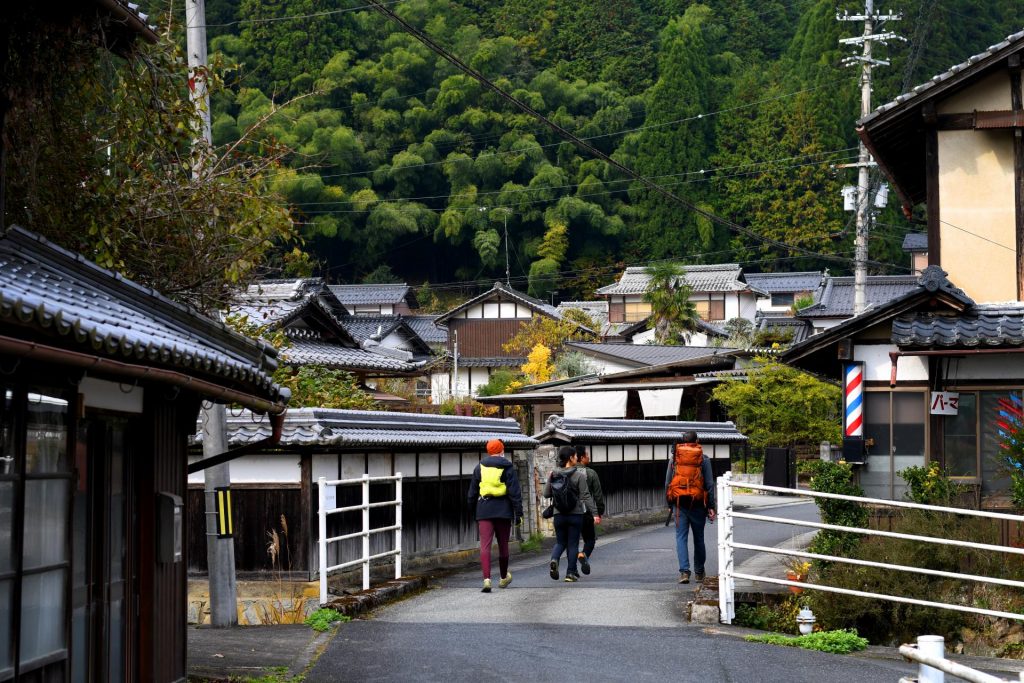
The four-day “Highlights” version of the Oni Trail is perfect for visitors with limited time in Kyoto. The journey starts at Oe Station, a 90-minute train ride from Kyoto Station on the JR Hashidate line. Oni culture is everywhere here: the light three-hour trek from the station up to Mt. Oe is dotted with oni statues, masks and signs. At the foot of Mt. Oe is the Oni Museum, conveniently located next to a mountain lodge where hikers can end their first day.
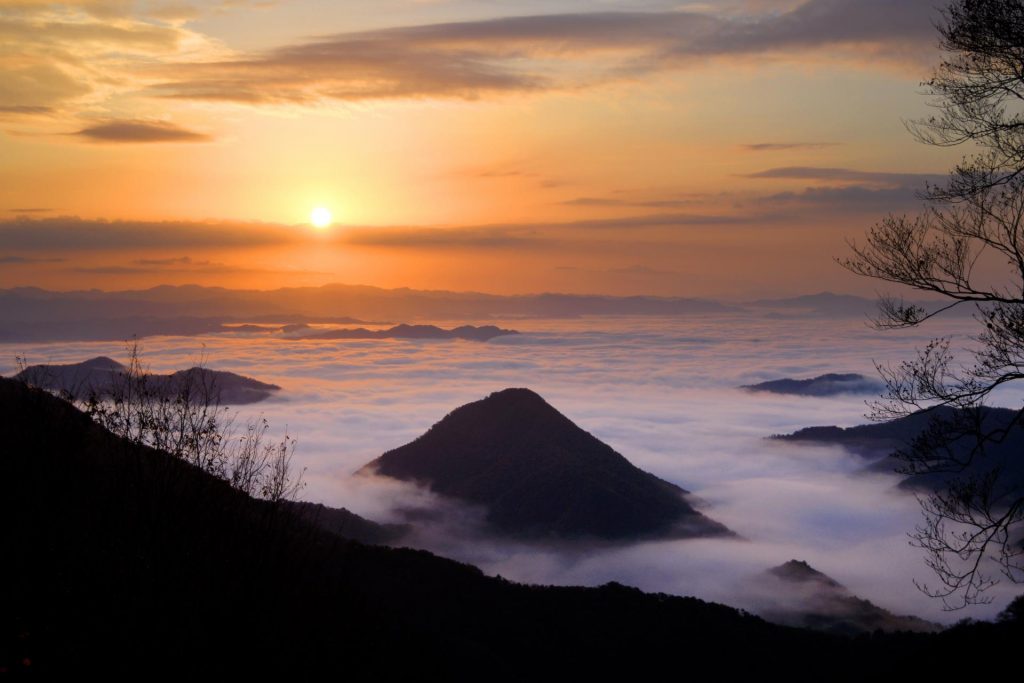
While not a particularly tall mountain, the 832-meter Mt. Oe is popular for its mid-mountain lookout spot with great sunrise views of the unkai (sea of clouds) sitting over the villages below. It takes roughly three hours from the base to the summit; you’ll be following the Miyazu Kaido. This stone-paved kodo (ancient path) was built during the Heian and Edo periods. The trail detours to Kaya Yama no Ie, a refurbished mountain lodge that serves a delicious course dinner of local organic vegetables and wild game. Their taproom serves Kyoto Brewing Company’s beers, which use locally grown Yosano hops.
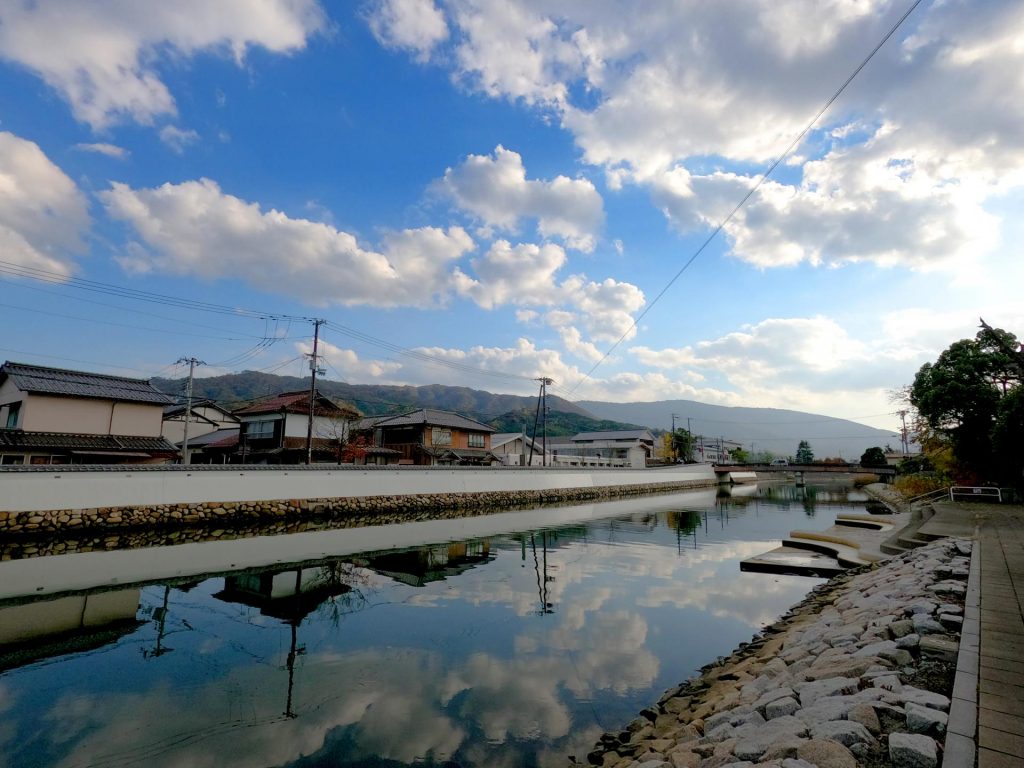
The third day goes from the mountains to the ocean. After descending Mt. Oe, take the train from Kita Station to Miyazu, a port city that prospered during the Edo Period. This is an eclectic town of cultures and religions as it was one of the towns where missionaries and cargo ships arrived.
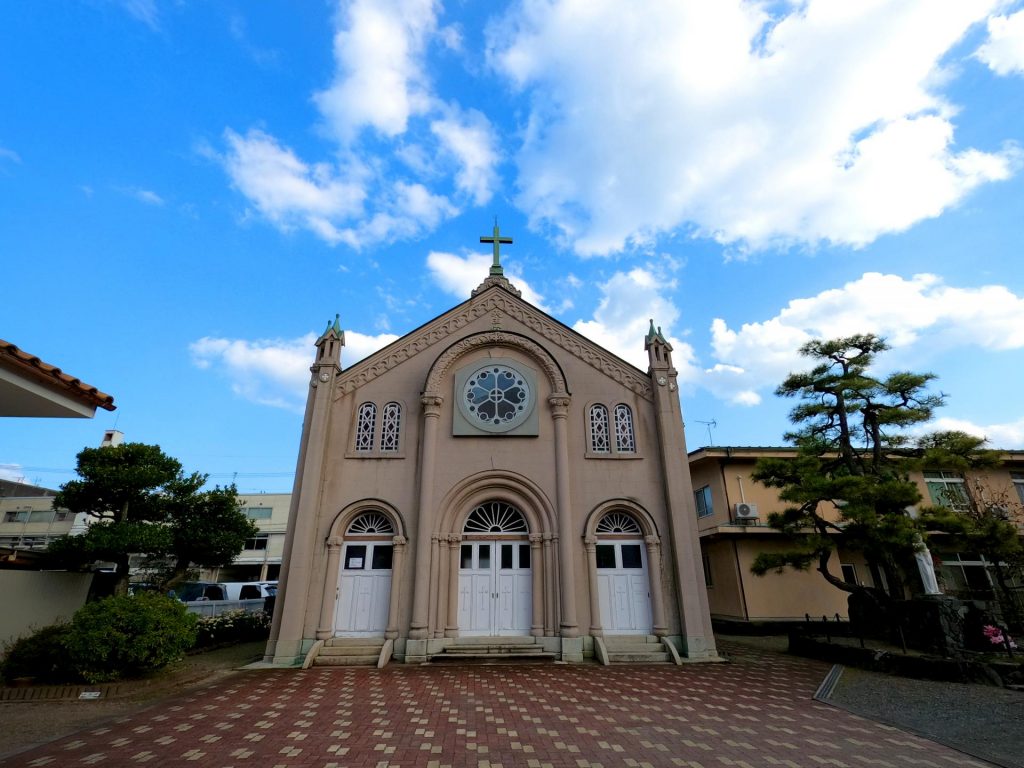
Today it is home to Miyazu Catholic Church, the oldest church still in operation in Japan; while the exterior is built in the Romanesque style, the interior is lined with tatami mat floors. Another architectural delight is Seikiro, once an inn for writers and artists. It still runs as a ryokan today and was awarded as a small Japanese art museum as it houses numerous paintings and artifacts. The kaiseki dinner includes seasonal seafood from the nearby ports; every winter, guests come here for snow crab.
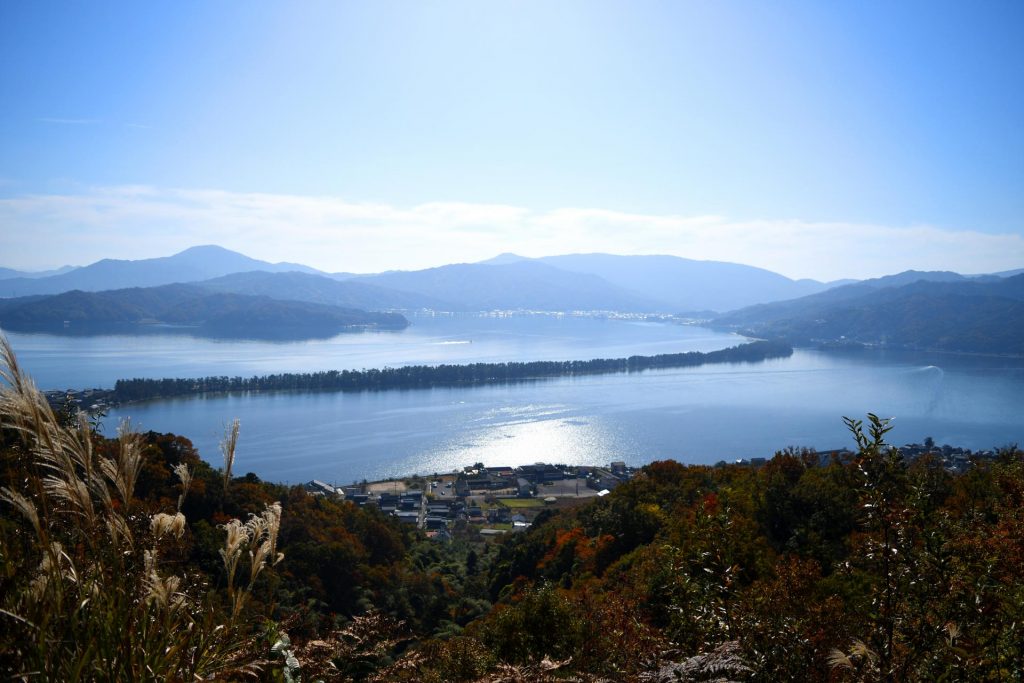
The final day is a trip to Amanohashidate, a three-kilometer natural sandbar lined with thousands of pine trees. Amanohashidate is said to be a sacred bridge to the heavens, and is designated as one of the Nihon Sankei, Japan’s three most scenic views. The bridge connects to the Kyotango Peninsula. Continue hiking up to Narai-ji Temple, which has a five-storied pagoda and bird’s eye views of Amanohashidate and the ocean. There’s a direct express train from Amanohashidate to Kyoto Station.
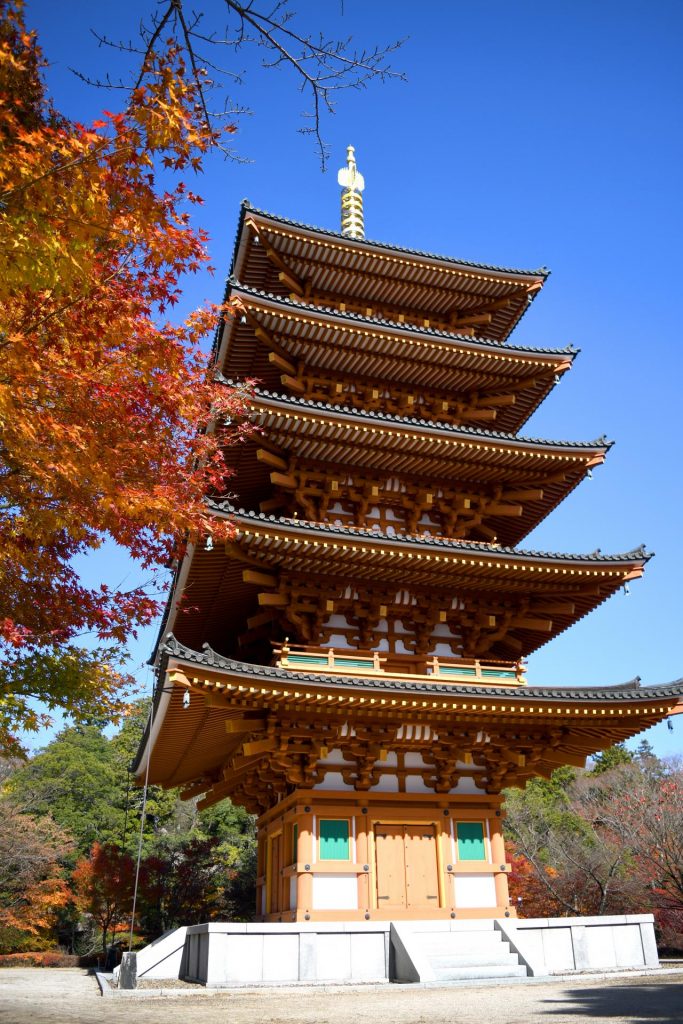
The Oni Trail continues north up the Kyotango Peninsula, eventually reaching the UNESCO San’in Kaigan Geopark on the Sea of Japan coast. In summer, this area is popular for stand-up paddling and surfing.
Getting There
From Kyoto Station, take the JR Hashidate line to Oe Station (100 minutes). There is also a train back to Kyoto Station from Amanohashidate Station (two hours and six minutes) or Amino Station at the tip of Kyotango Peninsula (two hours and 42 minutes). For more information, visit Adventure Tourism Kyoto here.
